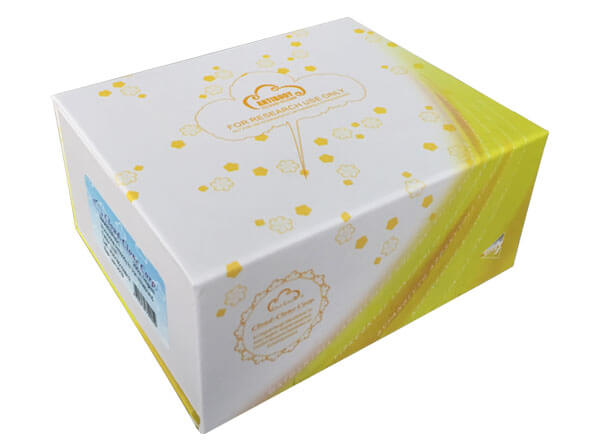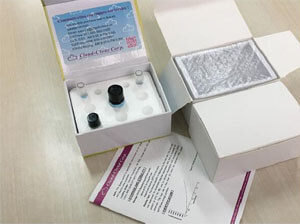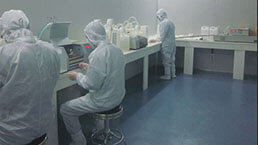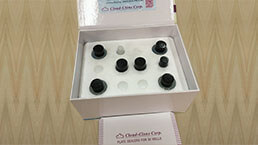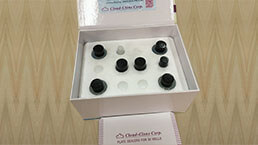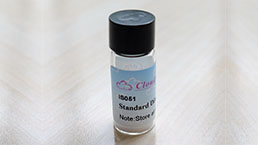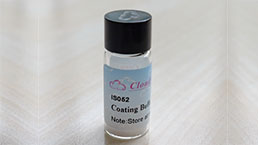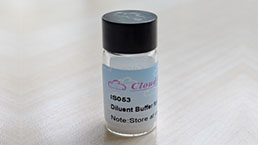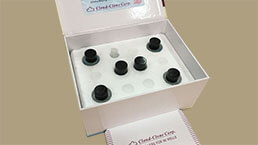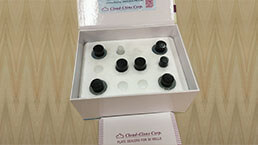ELISA Kit DIY Materials for Apolipoprotein E (APOE) 

Apo-E; AD2; Apoprotein; Alzheimer Disease 2(E4-Associated,Late Onset
- UOM
- FOB US$ 1,166.00 US$ 1,944.00 US$ 3,499.00 US$ 6,804.00 US$ 11,664.00
- Quantity
Overview
Properties
- Product No.KSA704Mu01
- Organism SpeciesMus musculus (Mouse) Same name, Different species.
- ApplicationsMain materials for "Do It (ELISA Kit) Yourself".
Research use only - Downloadn/a
- CategoryMetabolic pathwayCardiovascular biologyHepatology
- Reagent Contents Capture Antibody, Detection Antibody, Standard, Streptavidin-HRP, TMB Substrate, 96-well Plate
- Detectable SampleSerum, plasma, tissue homogenates, cell lysates, cell culture supernates and other biological fluids.
- Applicable PrincipleDouble-antibody Sandwich ELISA for Antigen Detection
- Detectable Range15.6-1000ng/mL
- Applicable Sensitivity6.7ng/mL
Sign into your account
Share a new citation as an author
Upload your experimental result
Review

Contact us
Please fill in the blank.
Specifity
The Abs in the kit have high sensitivity and excellent specificity for detection of Apolipoprotein E (APOE). No significant cross-reactivity or interference between Apolipoprotein E (APOE) and analogues was observed.
Usage
1. Coat the plates with 100μL per well of working solution of Capture Antibody.incubate overnight at 4°C or incubate at 37°C for 2 hours.
2. Aspirate and wash 1 time.
3. Block the plates with 200 μL per well of working solution of Blocking Buffer. Incubate at 37°C for 1.5 hours.
4. Aspirate and wash 1 time. The plates are now ready for sample detection, the protocol is the same as regular ELISA.
Storage
Antibodies, Standard and Streptavidin-HRP should be stored at -20°C. TMB should be stored at 4°C. 96-well Plate could be stored at room temperature. The contents are valid for twelve months. They are stable for one month after opening when stored at 4°C.
Support pack
Giveaways
Increment services
Citations
- Cerebrospinal fluid apolipoprotein E concentration decreases after seizureSeizure: PIIS1059131109002441
- Hepatic lipase- and endothelial lipase-deficiency in mice promotes macrophage-to-feces RCT and HDL antioxidant propertiesPubMed: 23328279
- Expression and clinical significance of apolipoprotein E in pancreatic ductal adenocarcinomaPubmed: 23609192
- Adipocyte Atp-Binding Cassette G1 Promotes Triglyceride Storage, Fat Mass Growth And Human ObesityPubmed:25249572
- Frequencies of apolipoprotein E alleles in depressed patients undergoing hemodialysis – a case-control studyPubMed: 25707516
- Culturing of HepG2 cells with human serum improve their functionality and suitability in studies of lipid metabolismPubMed: 26515253
- Adipocyte ATP-binding cassette G1 promotes triglyceride storage, fat mass growth, and human obesityPubMed: 25249572
- Adaptive immunity against gut microbiota enhances apoE-mediated immune regulation andreduces atherosclerosis and western-diet-related inflammation.pubmed:27383250
- Differential effects of apoE and apoJ mimetic peptides on the action of an anti-Aβ scFv in 3xTg-AD micePubmed:30026023
- Deletion of plasma Phospholipid Transfer Protein (PLTP) increases microglial phagocytosis and reduces cerebral amyloid-β deposition in the J20 mouse …Pubmed:29731975
- Comparative proteomics analysis of serum proteins in gestational diabetes during early and middle stages of pregnancyPubmed: 31162828
- Hepatic HuR modulates lipid homeostasis in response to high-fat dietPubmed: 32546794
- Pathology and Proteomics-Based Diagnosis of Localized Light-Chain Amyloidosis in Dogs and CatsPubmed: 32880234
- The Significance of Apolipoprotein E Measurement in the Screening of Fetal Down Syndrome33321701
- Discovery and validation of FBLN1 and ANT3 as potential biomarkers for early detection of cervical cancer33602229
- GP73 is a TBC-domain Rab GTPase-activating protein contributing to the pathogenesis of non-alcoholic fatty liver disease without obesity34853313
- Iridium nanoclusters as high sensitive-tunable elemental labels for immunoassays: Determination of IgE and APOE in aqueous humor by inductively coupled …Pubmed:35378356
- Gold nanoclusters as elemental label for the sequential quantification of apolipoprotein E and metallothionein 2A in individual human cells of the retinal …Pubmed:35361429



